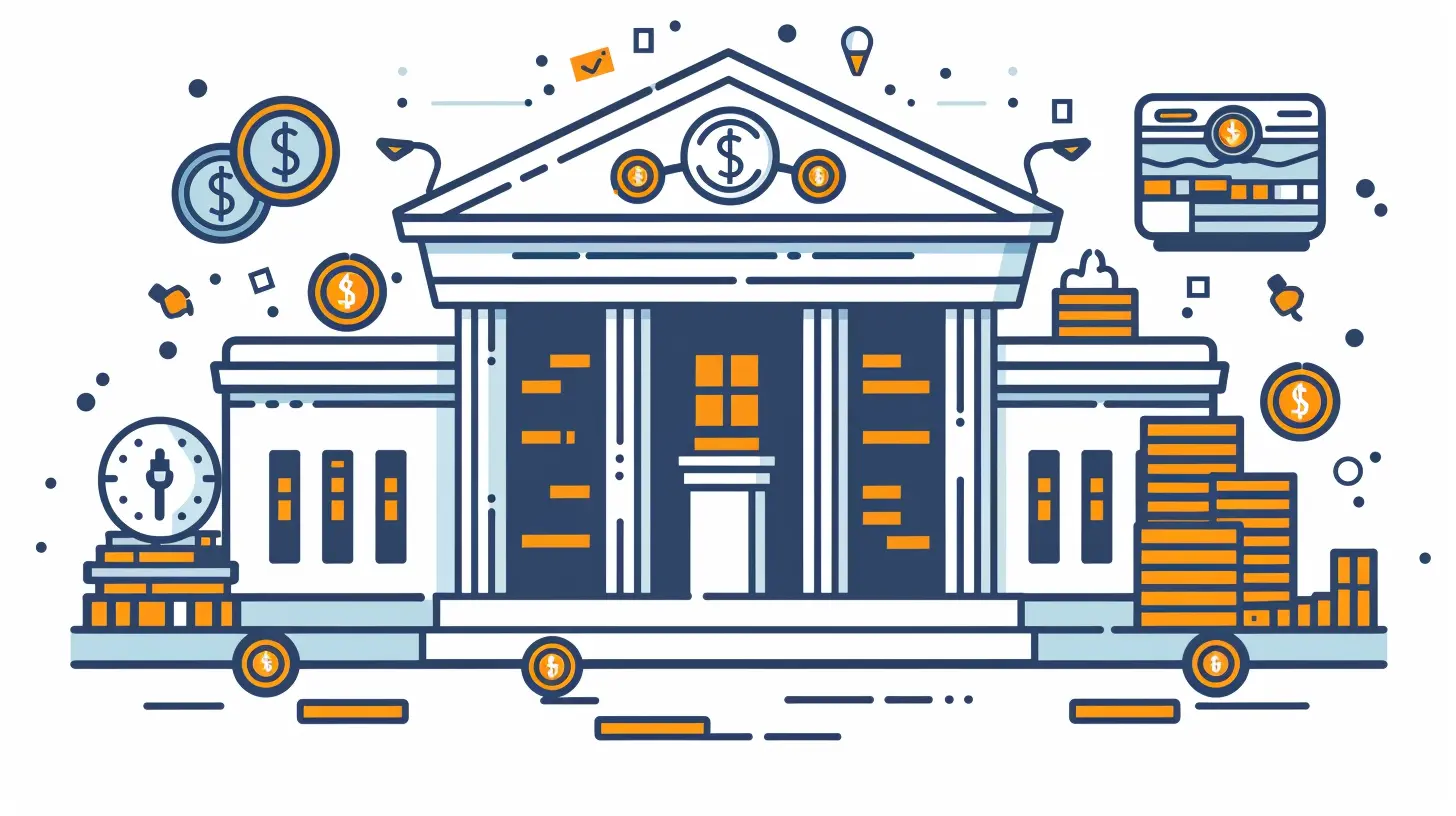How Business Loans Are Structured Based on Interest Rates
28 July 2025
When you’re running a business—whether it's a local bakery, a booming e-commerce store, or a growing tech startup—you’ll probably reach a point where cash flow just doesn’t cut it. That’s when business loans step in to give things a little boost. But here’s the thing: not all business loans are created equal, especially when it comes to interest rates.
So, how are business loans structured based on those tricky little numbers called interest rates? Don't worry, this article breaks it all down in the plainest English possible. Let’s dive into it.
Why Interest Rates Matter in Business Loans
You wouldn’t buy a car without checking the gas mileage, right? Same goes for loans and their interest rates. The interest rate on a business loan affects how much you’ll end up paying over time—simple as that.A lower interest rate usually means smaller monthly payments and lower overall costs. A higher one? That can bleed your profits dry faster than you can say “ROI.”
Types of Interest Rates: Fixed vs. Variable
Before we get into how loans are structured, it's essential to understand the two main types of interest rates:- Fixed Interest Rates: These stay the same throughout the life of the loan. Predictable and stable—like your favorite hoodie.
- Variable Interest Rates: These can change based on an index or market conditions. Could go up, could go down—kind of like riding a financial rollercoaster.
Knowing the kind you’re dealing with will help you understand why the structure of the loan looks the way it does.
The Basic Structure of a Business Loan
Let’s keep it real. Business loans are not just a matter of “I borrow money, I pay it back.” There’s more to it.Here’s what a basic loan structure looks like:
1. Loan Amount (Principal) – The amount you borrow.
2. Interest Rate – The cost of borrowing.
3. Loan Term – How long you have to pay it back.
4. Repayment Schedule – Weekly, monthly, quarterly, etc.
5. Fees – Origination fees, late fees, prepayment penalties…they add up.
Now, depending on how the interest rate is set, each of these parts may look different or carry more weight.
Interest Rates by Loan Type
Let’s break it down by loan type because—surprise, surprise—different loans come with different structures. And guess what decides a lot of that structure? Yep, the interest rate.1. Term Loans
These are your classic business loans. Borrow a chunk of money, repay it with interest over a set period.- Fixed or Variable: Term loans can go either way, but many small businesses opt for fixed rates for predictability.
- Structure: Principal + interest paid monthly. Often amortized, meaning you pay more interest upfront, then more principal later.
- Impact of Interest Rates: Higher rates mean higher monthly payments. Lenders may offer lower rates for short-term loans but hike them up for longer terms.
2. Lines of Credit
Think of this like a credit card for your business. You get access to a certain amount, borrow what you need, pay interest on what you use.- Usually Variable: Most business lines of credit have rates tied to the prime rate or LIBOR.
- Structure: Flexible. Use, repay, reuse. You only pay interest on what you draw.
- Interest Rate Factor: Fluctuations can affect your cost instantly. Good for short-term needs but tricky during volatile markets.
3. SBA Loans
Backed by Uncle Sam (thanks, Small Business Administration), SBA loans often come with better terms and rates.- Fixed or Variable: Depends on the program—SBA 7(a), 504, etc.
- Structure: Long repayment terms, lower down payments.
- Interest Rate Details: Often tied to the prime rate but capped. That makes them a more affordable option for many businesses.
4. Equipment Financing
Need a new oven, forklift, or computer system? Equipment financing helps you buy big-ticket items.- Usually Fixed: Lenders typically offer fixed rates secured by the equipment itself.
- Structure: Regular payments (monthly), often matching the equipment’s useful life.
- Interest Impact: Lower interest rates are easier to secure because of the collateral. But if your credit’s shaky, brace yourself.
5. Merchant Cash Advances
Not technically loans, but worth mentioning. You get a lump sum in exchange for a percentage of your daily credit card sales.- No Fixed Interest: Instead, they use a factor rate (ex: 1.3x the advance).
- Structure: Daily or weekly deductions based on sales.
- What It Means: It can feel like having a financial leech if sales slow down. Costly? You bet.
Factors That Influence Interest Rates on Business Loans
So you're probably wondering, "Why do banks offer different interest rates to different businesses?" Great question.Here are a few key factors:
1. Credit Score
Just like in your personal life, your business credit matters—a lot. Higher score = better rates.2. Time in Business
Lenders love longevity. A 5-year-old business seems more stable than one that popped up last month.3. Revenue and Cash Flow
If your business consistently makes money and has healthy cash flow, you’re seen as less risky.4. Collateral
Secured loans (backed by assets) usually come with lower interest rates. Why? Because the lender has a safety net.5. Loan Amount and Term Length
Bigger loans or longer terms may attract higher interest rates since they pose a bigger risk to the lender.Real-World Example: Fixed vs. Variable Structure
Let’s say you’re borrowing $100,000 for your business. Here’s what two different interest structures could look like:- Fixed Rate: 6% over 5 years
- Monthly payment: ~$1,933
- Total repayment: ~$115,980
- Variable Rate: Starts at 5%, could go up to 8%
- Monthly payment: Starts at ~$1,887, could rise to ~$2,027
- Total repayment: Depends on rate changes
See the difference? The variable rate might look better upfront, but if rates spike, you could end up shelling out way more.
How to Choose the Right Loan Structure
Alright, let’s get practical. If you're standing at the crossroads of business financing, which way do you go?Here’s what to ask yourself:
1. How stable is my revenue? If it fluctuates, a variable interest rate might be too risky.
2. Can I handle a larger monthly payment? Fixed-rate structures often mean higher payments, but they’re predictable.
3. Do I need flexibility? Maybe a line of credit or a short-term loan works best.
4. How long do I plan to take to repay? Longer term = potentially higher interest, but lower monthly strain.
5. Am I okay with collateral? Secured loans typically offer better rates.
It's like dating—pick the loan that aligns with your lifestyle and goals.
Tips for Getting the Best Deal
Even if you’re not a financial wizard, there are some smart moves you can make:- Shop around – Don’t settle for the first offer. Compare multiple lenders.
- Boost your credit score – Pay debts, reduce outstanding balances, and correct any errors on your credit report.
- Borrow only what you need – It’s tempting to get a bigger loan “just in case,” but that means more interest.
- Understand the full cost – APR includes interest, fees, and other costs—get the full picture.
- Negotiate terms – Yes, you can do this. Especially if you have a solid business history.
What Lenders Don’t Always Tell You About Interest Rates
Let’s peel back the curtain a bit. Some lenders throw around “low-interest rates” to hook you. But what they don’t emphasize is:- Teaser Rates – Super low rates that jump after a few months.
- Hidden Fees – Application, servicing, or closing fees that spike your real cost.
- Compounding Frequency – Daily vs. monthly compounding affects how much interest you rack up.
Always—seriously, always—read the fine print.
Conclusion: It’s All About Balance
At the end of the day, understanding how business loans are structured based on interest rates is about knowing what you're really signing up for. Whether it’s a straightforward term loan or a flexible credit line, the way that interest is set and structured will affect your payments, profitability, and peace of mind.So, take the time to dig into the details, ask questions, and don’t be shy about talking to several lenders. You’re not just borrowing money—you’re making a decision that could shape the future of your business.
And hey, nobody said you have to figure it all out alone. Accountants, financial advisors, even loan officers—lean on the pros if you need to.
all images in this post were generated using AI tools
Category:
Interest RatesAuthor:

Zavier Larsen
Discussion
rate this article
1 comments
Harper Peterson
Why settle for mediocre rates? Understanding the structure of business loans empowers you to negotiate better terms. Don’t be afraid to demand transparency and favorable conditions—your business deserves nothing less. Be bold in financing your dreams!
August 5, 2025 at 10:59 AM

Zavier Larsen
Thank you for your insightful comment! Empowering ourselves with knowledge about loan structures truly enhances our negotiating power and helps secure the best terms for our businesses. Let's strive for excellence in our financing journeys!


